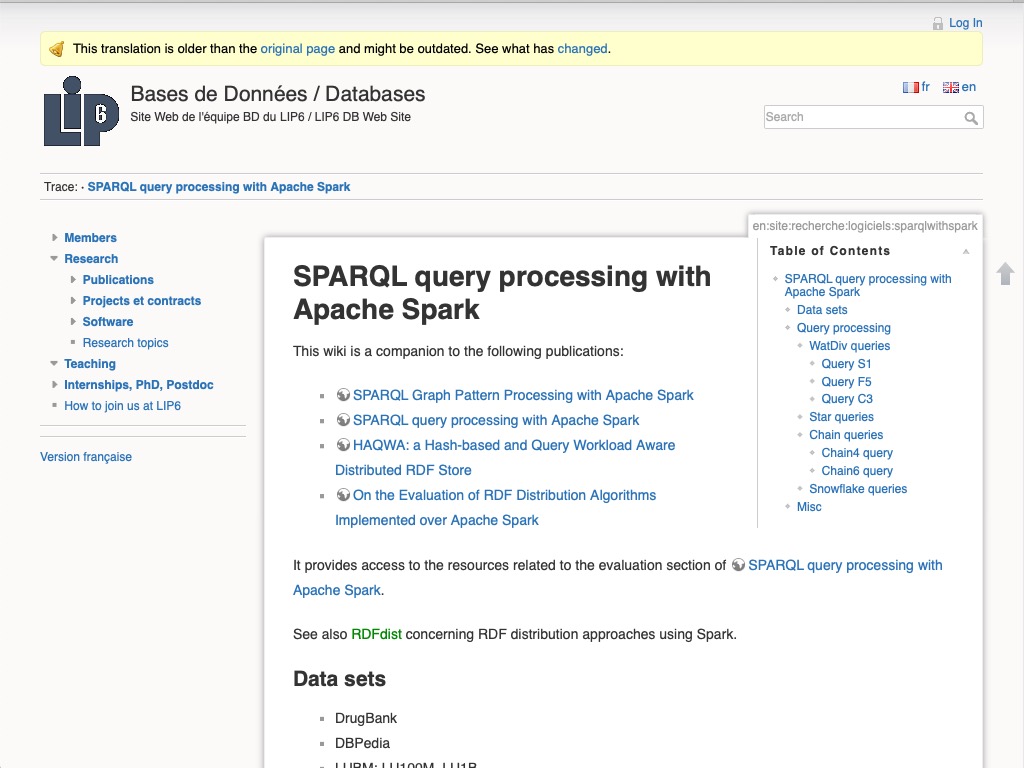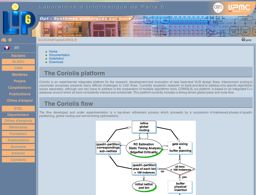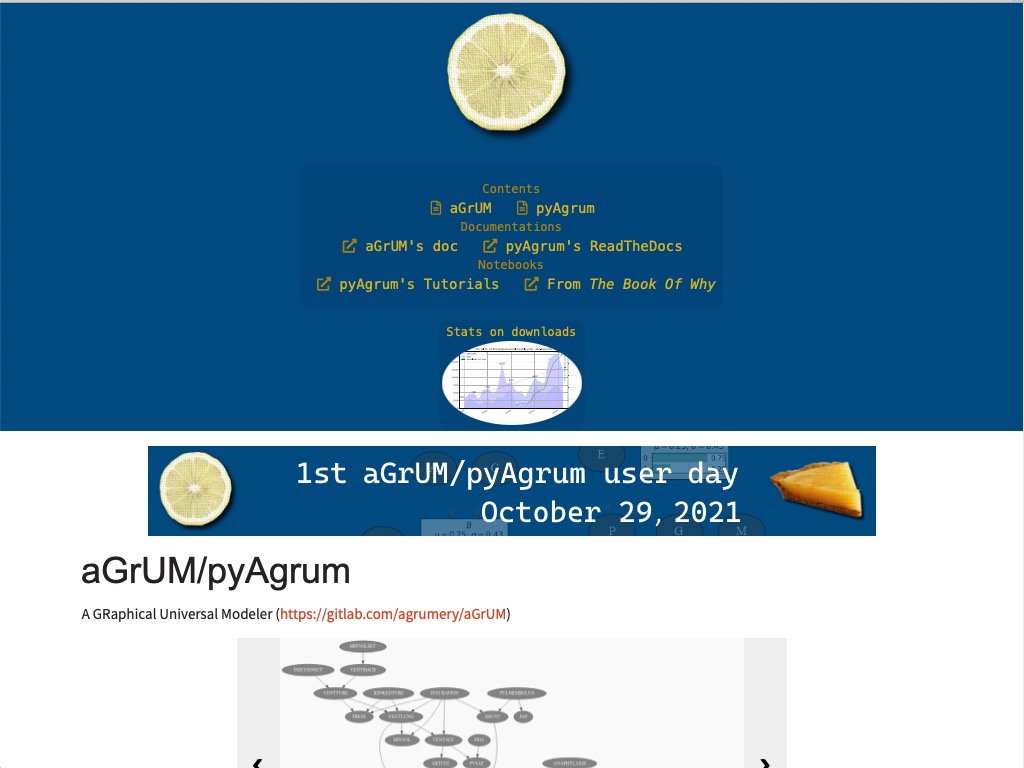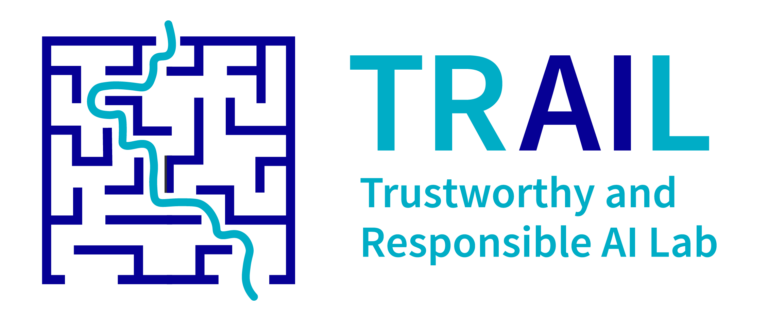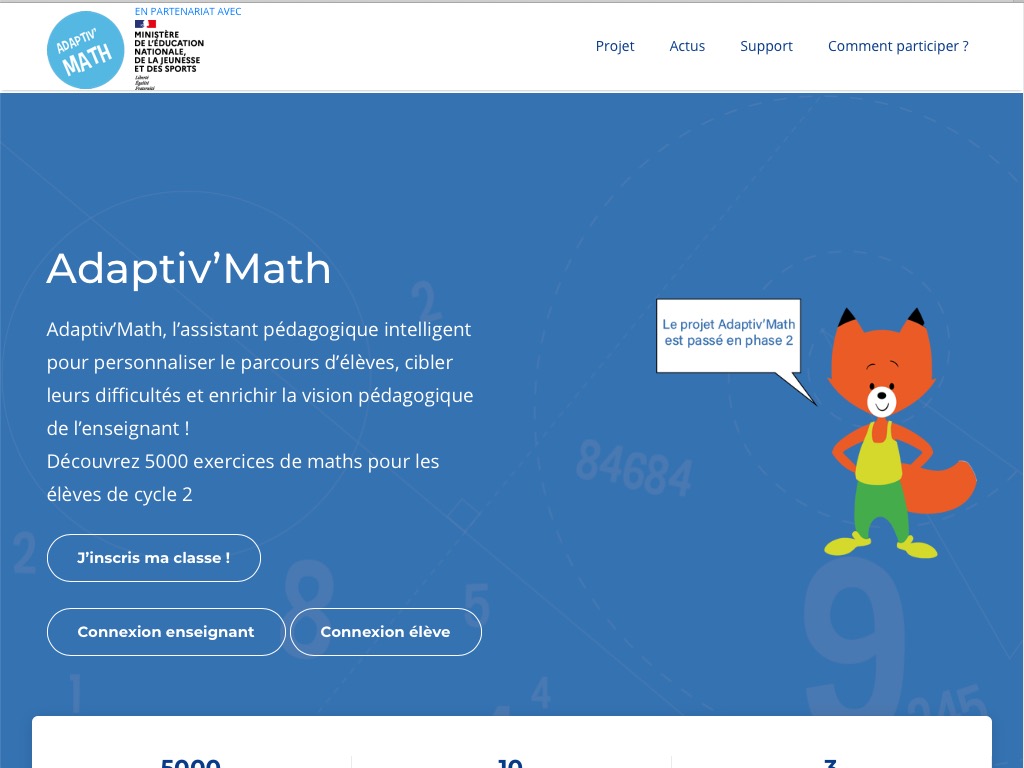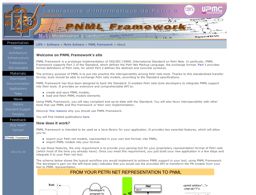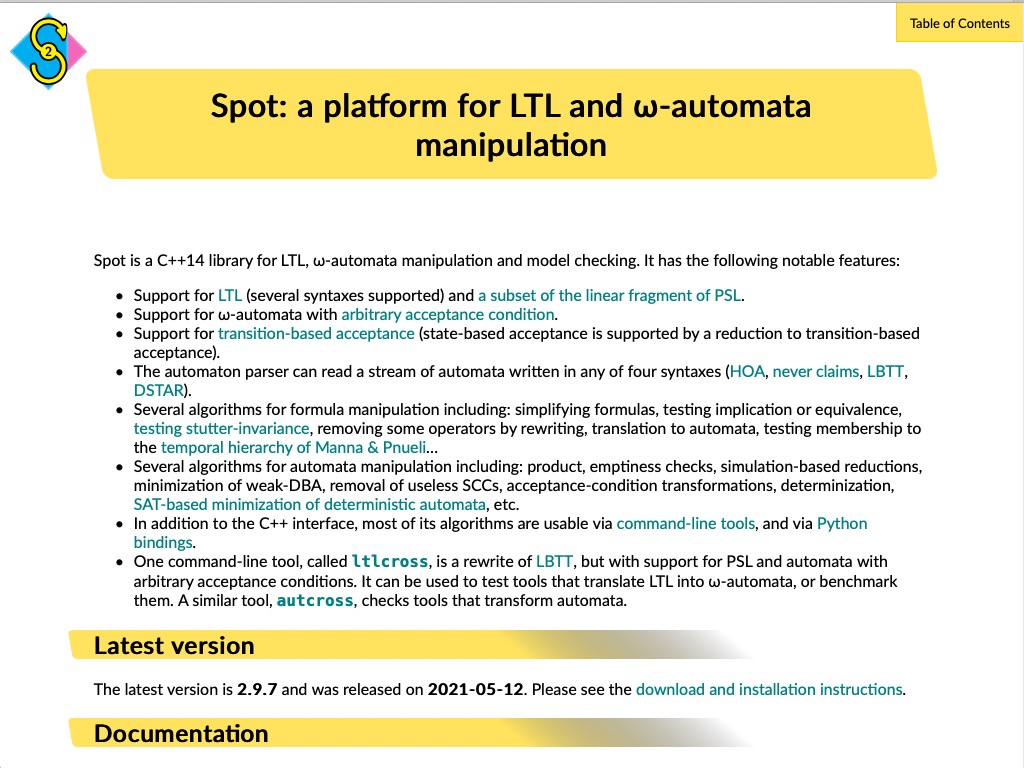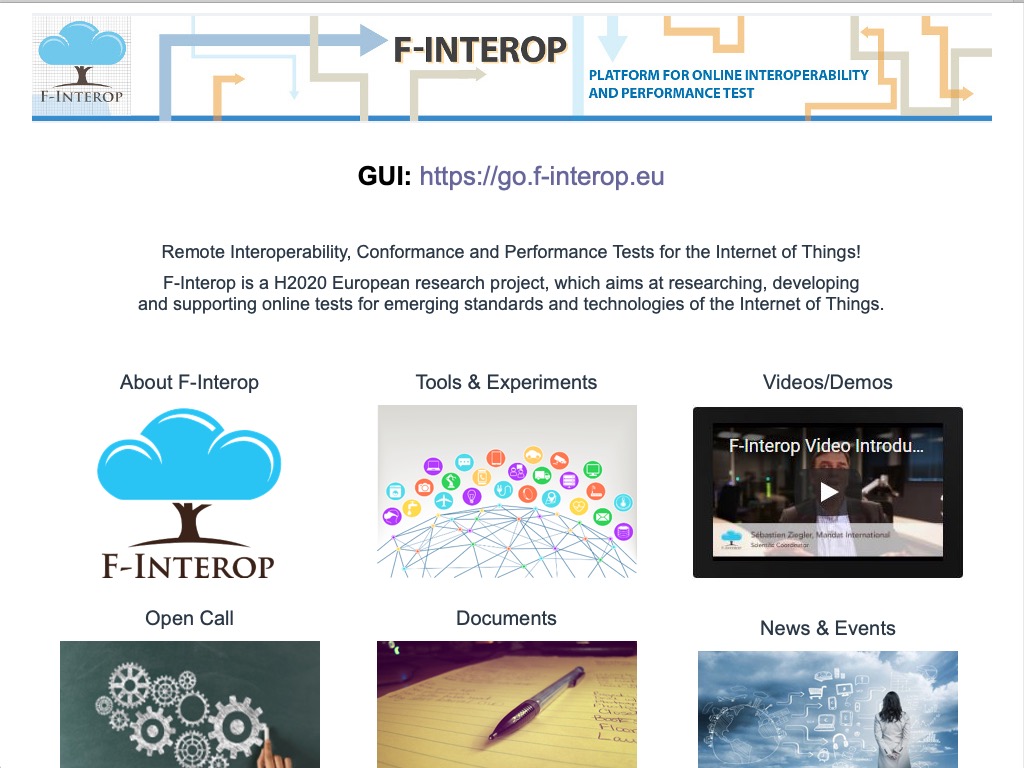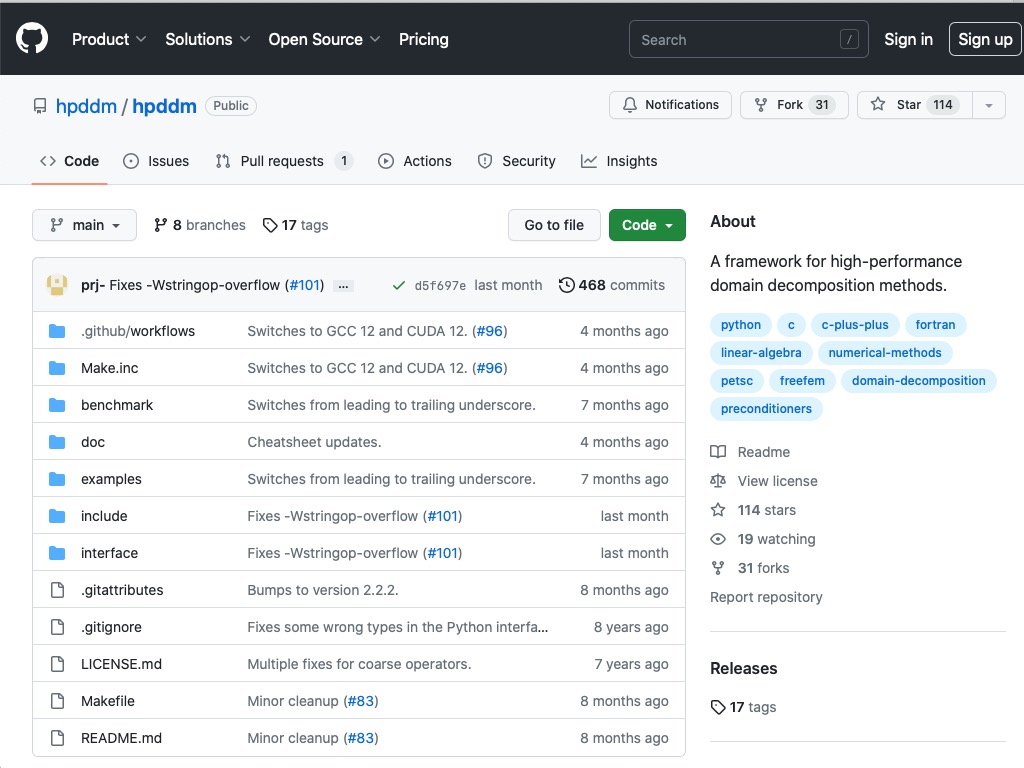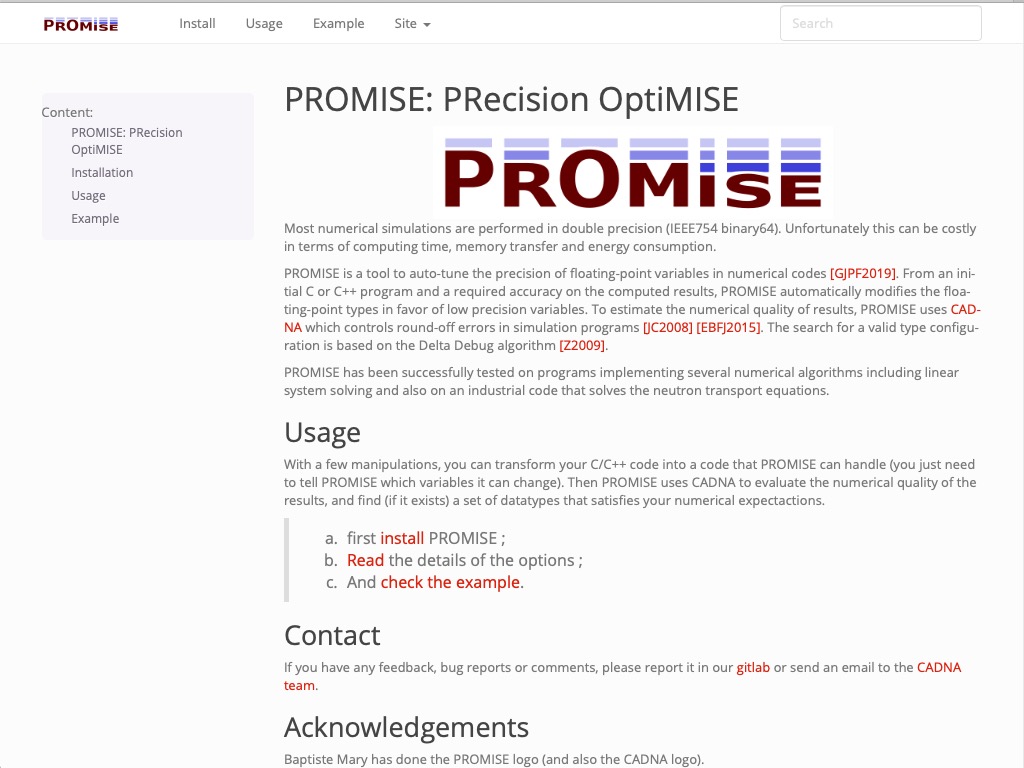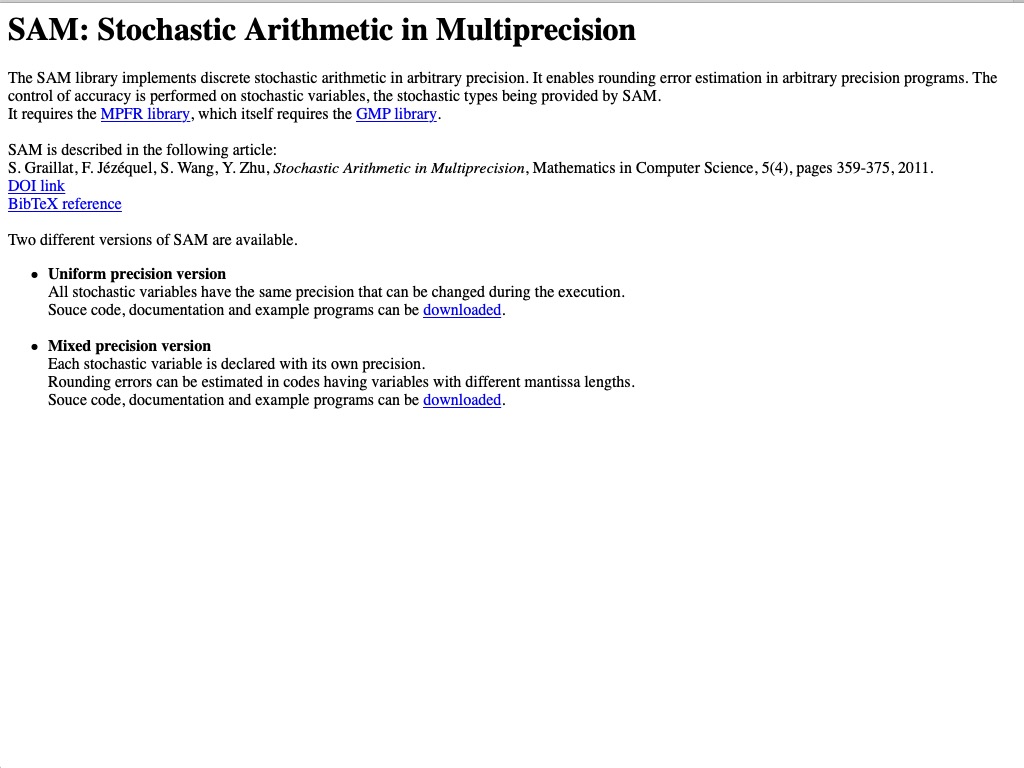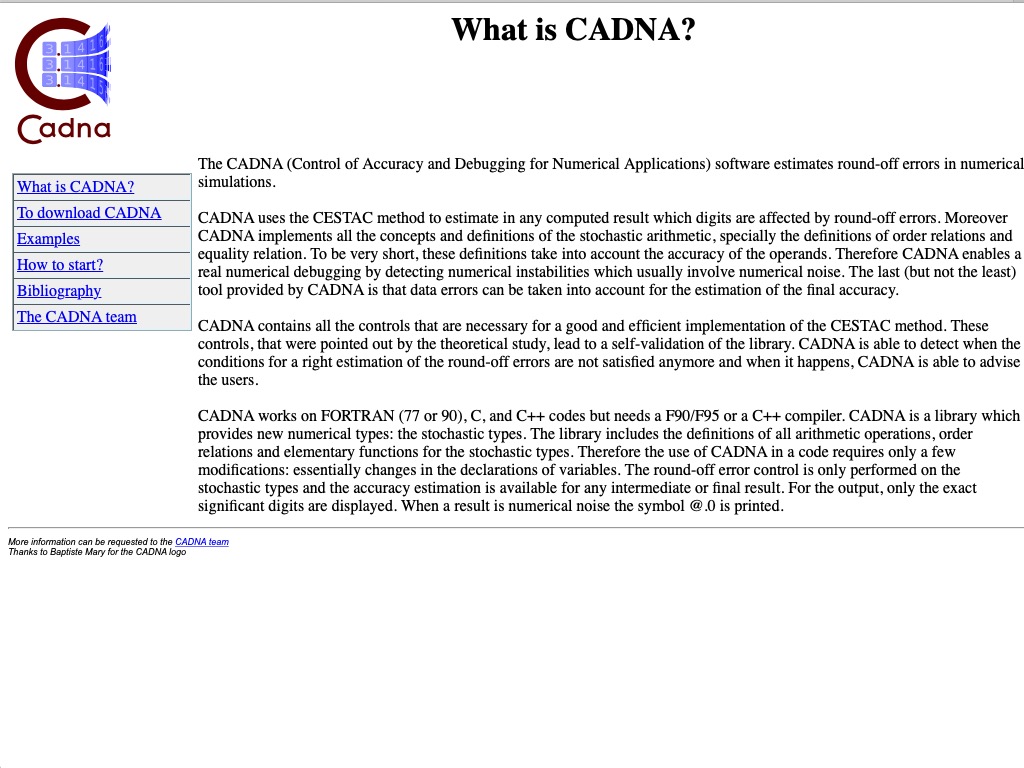- Research
- Projects
Projects
Team : ALMASTY
Résistance des systèmes cryptographiques
Le projet Cryptanalyse s’intéresse à l’étude et à la standardisation des primitives cryptographiques. En effet la cryptographie moderne est devenue un outil indispensable pour sécuriser les communications personnelles, commerciales et institutionnelles. Ce projet permettra de fournir, une estimation des difficultés de résoudre les problèmes sous-jacents et d’en déduire le niveau de sécurité que confère l’utilisation de ces primitives.
La problématique est l’évaluation de la sécurité des algorithmes cryptographique.
Project Leader : Charles Bouillaguet
10/01/2023
Tailles de clés : optimisations pratiques et théoriques et approches modernes pour des estimations précises du coût de NFS
Project Leader : Charles Bouillaguet
10/01/2021
Calcul réparti sécurisé : Cryptographie, Combinatoire, Calcul Formel
Project Leader : Damien Vergnaud
09/10/2021
Team : ALSOC
Vérification formelle et résilience aux attaques physiques de contre-mesures matérielles
Project Leader : Emmanuelle Encrenaz
04/08/2025
Modélisation et Vérification pour CPS Sécurisés et Performants
Project Leader : Daniela Genius
10/01/2023
Conception de systèmes sécurisés par une réduction des effets de la micro-architecture sur les attaques par canaux auxiliaires
Project Leader : Quentin Meunier
10/01/2020
TSAR - TSAR (Tera-Scale ARchitecture)
Project Leader : Alain Greiner
09/27/2017
Team : APR
Analyse de paramètres de classes de DAGS
Project Leader : Antoine Genitrini
10/01/2023
Leveraging Software Heritage to Enhance Cybersecurity
INRIA est nommé coordinateur par l'ANR - Projet concernant la cybersécurité
Project Leader : Antoine Mine
10/01/2023
Raisonnements formellement certifiés en apprentissage automatique
Project Leader : Antoine Mine
10/01/2023
Improving Digital Systems Security Evaluation
Project Leader : Antoine Mine
07/01/2022
TORI - In-situ Topological Reduction of Scientific 3D Data
TORI (In-situ Topological Reduction of Scientific 3D Data) is an ERC Consolidator research project started in October 2020 and coordinated by Julien Tierny. It aims at addressing the explosion in size and complexity of large-scale data by developing the next generation data reduction tools based on topological data analysis.
Project Leader : Julien Tierny
10/01/2020
Team : BD
experimaestro - Computer science experiment scheduler and manager
Experimaestro is an experiment manager based on a server that contains a job scheduler (job dependencies, locking mechanisms) and a framework to describe the experiments with JavaScript or in Java.
Project Leader : Benajmin PIWOWARSKI
01/01/2016
SPARQL on Spark - SPARQL query processing with Apache Spark
A common way to achieve scalability for processing SPARQL queries over large RDF data sets is to choose map-reduce frameworks like Hadoop or Spark. Processing complex SPARQL queries generating large join plans over distributed data partitions is a major challenge in these shared nothing architectures. In this article we are particularly interested in two representative distributed join algorithms, partitioned join and broadcast join, which are deployed in map-reduce frameworks for the evaluation of complex distributed graph pattern join plans. We compare five SPARQL graph pattern evaluation implementations on top of Apache Spark to illustrate the importance of cautiously choosing the physical data storage layer and of the possibility to use both join algorithms to take account of the existing predefined data partitionings. Our experimentations with different SPARQL benchmarks over real-world and synthetic workloads emphasize that hybrid join plans introduce more flexibility and often can achieve better performance than join plans using a single kind of join implementation.
Project Leader : Hubert NAACKE
01/01/2015
http://www-bd.lip6.fr/wiki/en/site/recherche/logiciels/sparqlwithspark
BOM - Block-o-Matic!
Block-o-Matic is a web page segmentation algorithm based on an hybrid approach for scanned document segmentation and visual-based content segmentation. A web page is associated with three structures: the DOM tree, the content structure and the logical structure. The DOM tree represents the HTML elements of a page, the geometric structure organizes the content based on a category and its geometry and finally the logical structure is the result of mapping content structure on the basis of the human-perceptible meaning that conforms the blocks. The segmentation process is divided in three phases: analysis, understanding and reconstruction of a web page. An evaluation method is proposed in order to perform the evaluation of web page segmentations based on a ground truth of 400 pages classified into 16 categories. A set of metrics are presented based on geometric properties of blocks. Satisfactory results are reached when comparing to other algorithms following the same approach.
Project Leader : Andrès SANOJA
01/01/2012
Team : CIAN
ARCHitectures based on unconventional accelerators for dependable/energY efficienT AI Systems
Project Leader : Haralampos stratigopoulos
12/01/2024
Systèmes Bio-inspirés distribués de confiance : bases théoriques et mise en œuvre matérielle
Project Leader : Haralampos Stratigopoulos
10/01/2023
Trusted SMEs for Sustainable Growth of Europeans Economical Backbone to Strengthen the Digital Sovereignty
Project Leader : Haralampos Stratigopoulos
10/01/2023
A network of excellence for distributed, trustworthy, efficient and scalable AI at the Edge
Project Leader : Haralampos Stratigopoulos
09/01/2023
Compréhension et atténuation d’erreur dans les implémentations analogiques de réseaux de neurones sur silicium
Project Leader : Haralampos Stratigopoulos
10/01/2022
Récupération d'énergie mécanique proche des limites physiques par synthèse adiabatique de la dynamique électromécanique
C23/0800
Project Leader : Dimitri Galayko
10/01/2022
Architectures matérielles fiables pour l'Intelligence Artificielle de confiance
C22/0009
Project Leader : Haralampos Stratigopoulos
01/25/2022
CORIOLIS - Platform for physical synthesis of integrated circuits
Coriolis is an experimental integrated platform for the research, development and evaluation of new back-end VLSI design flows. Interconnect scaling to nanometer processes presents many difficult challenges to CAD flows. Currently academic research on back-end tend to address only specific algorithmic issues separately, although one key issue to address is the cooperation of multiple algorithmic tools. CORIOLIS, our platform, is based on an integrated C++ database around which all tools consistently interact and collaborate. This platform currently includes a timing-driven global place and route flow.
Project Leader : Jean-Paul CHAPUT
01/01/2004
CAIRO - Analog IP Design
Our purpose is to provide a language for designing generators of analog functions, that can be easily ported to new set of specfications and new technologogy processes. We are currently developing such a language that is called CAIRO+
The CAIRO+ language supports the four steps of a design flow based on net-list and layout templates. This language is aimed to help the designer to capture his knowledge, thus creating a library of layout-aware analog functions. It is based on C++ language. The design flow relevant to CAIRO+ is the following :
->net-list and layout template capture, ->design space exploration (managing electrical constraints) ->shape function computation (managing geometrical constraints) ->layout generation (place and route) CAIRO+ allows creating complex hierarchical analog function generators by using existing generators of simpler functions. It is an answer to the problem of Analog and Mixed IPs.
As a demonstration of the CAIRO+'s capabilities, we are developping Analog to Digital converters, specially Sigma Delta.
Project Leader : Marie-Minerve LOUËRAT
01/01/2004
Team : DECISION
Algorithmes pour la prise de décision et l'apprentissage des préférences en optimisation multi-objectifs
Project Leader : Nawal Benabbou
10/01/2024
aGrUM - a Graphical Unified Model
aGrUM is a C++ library designed for easily manipulating graphical models. Its range of applications is quite large as it is designed, e.g., for performing learning tasks (for instance, learning Bayes nets from data), planning tasks (FMDPs) and inference (Bayes nets, GAI-nets, influence diagrams).
Project Leader : Christophe GONZALES & Pierre-Henri WUILLEMIN
Team : DELYS
Algorithmes distribués frugaux au coeur des réseaux
Project Leader : Pierre Sens
10/01/2024
Vers des applications serverless correctes par construction
Project Leader : pierre sens
10/01/2024

Désagrégation virtualisée
PEPR CLOUD
Project Leader : Julien Sopena
09/01/2023
Un nouveau paradigme de donnée : Les données autonomes et intelligentes
Project Leader : Franck Petit
10/01/2022
Gestion autonome des ressources dans le Fog computing
Project Leader : Jonathan Lejeune
10/01/2020
Team : LFI
Exploitation de modèles d'explications pour les algorithmes d'apprentissage profond
Project Leader : Christophe Marsala
10/01/2024
Histoire des agences d'images et vision par ordinateur
Project Leader : Isabelle Bloch
10/01/2024
Méthodes Avancées pour l'Assistance à la Gastro-endoscopie Interventionnelle Endoscopique
Project Leader : Isabelle Bloch
01/01/2024
Politique de conception floue interprétable en apprentissage par renforcement
Project Leader : Christophe Marsala
10/01/2022
Apprentissage de mesure de similarité pour le transfert analogique
Project Leader : Marie-Jeanne Lesot
10/01/2022
Laboratoire Commun AXA Group - Trustworthy And Responsible AI Lab
Project Leader : Christophe Marsala
12/13/2021
Premature Human Connectome Patterns: mapping the fetal brain development using extreme field MRI
Project Leader : Isabelle Bloch
10/01/2021
Intelligence artificielle hybride appliqué à la sigillographie byzantine
Project Leader : Isabelle Bloch
09/01/2021
Laboratoire Commun TRIBVN - Jumeaux Numériques pour le Diagnostic
Project Leader : Isabelle Bloch
05/01/2021
Team : MOCAH
IA pour la personnalisation de rétroactions dans l'apprentissage de la pensée informatique par le jeu
Project Leader : Sebastien Lalle
10/01/2024
Simulateur haptique pour l'apprentissage de la spasticité
Project Leader : Vanda Luengo
10/01/2022
Adaptiv’Math - Adaptiv’Math
obtenu dans le cadre du Partenariat d'Innovation Intelligence Artificielle (P2IA) du ministère de l'éducation nationale et porté par la startup EvidenceB, implique des entreprises (Nathan, Daesign, Schoolab, Isograd, BlueFrog), deux laboratoires (LIP6 et Inria Bordeaux), l'APMEP (association des professeurs de mathématiques) ainsi que des chercheurs en psychologie cognitive (E. Sander) et en neurosciences (A. Knopf). Il vise à réaliser un assistant pédagogique pour les mathématiques du Cycle 2 (CP, CE1, CE2) s'appuyant sur des algorithmes d'IA et sur un ensemble d'exercices définis à partir d'avancées en sciences cognitives.
Nous travaillons sur une brique IA visant à proposer des regroupements d'élèves (textit{clustering}) appris sur l'ensemble des classes sur la base de critères de maîtrise de compétences en mathématiques. Ce textit{clustering} est ensuite appliqué classe par classe à intervalles réguliers pour proposer à l'enseignant un suivi de l'évolution de ses groupes d'élèves, afin de faciliter la mise en place de stratégies de pédagogie différenciée.
Project Leader : François Bouchet
10/01/2019
MAGAM - Multi-Aspect Generic Adaptation Model
MAGAM is a Multi-Aspect (didactic, pedagogic, affective and motivational, gaming, etc.) Generic Adaptation Model based on matrix calculation that aims to adapt learning activities.
Project Leader : Vanda LUENGO et Baptiste MONTERRAT
03/01/2016
LEA4PA - LEarning Analytics for Adaptation and Personnalisation
This project aims to built a plateform to assist teachers in adapting learning activities. Multiple indicators (cognitive, pedagogical, temporal, etc. will be inferred from data traces that are recorded and generated automatically or manually from the learner activities. Visualization systems will be proposed to assist teachers in their activities' adaptation process and make it.
Project Leader : Vanda LUENGO et Amel YESSAD
01/01/2016
Team : MoVe
Défense contre les programmes malveillants
Project Leader : Dylan Marinho
06/21/2022
BCMCyPhy - Component model for cyber-physical control systems
This research project and its associated software aim at designing and implementing a software component model for cyber-physical control systems. It develops over the BCM4Java project from which it uses the basic concepts and the implementation of distributed components in Java (10.000 lines of code and documentation today). Besides integrating real time components, this project studies component-based software architectures for control, their specification using stochastic hybrid systems and their simulation using models following the DEVS standard. A particular focus is given on the parallel composability between components, their individual specifications and simulation models. A software subproject of BCMCyPhy proposes a new implementation in Java of the DEVS standard for modular simulation of components and their assemblies (20.000 lines of code and documentation today). The simulators obtained through the composition of the components simulator models allow to debug, test, verify and validate applications. This software has been used by a few tens of students and is still being used in the context of the ALASCA master 2 course since 2018.
Project Leader : Jacques MALENFANT
06/18/2019
PNML Framework
PNML Framework is a prototype implementation of ISO/IEC-15909 part 2, International Standard on Petri Net Markup Language. The primary purpose of PNML is to enable interoperability among Petri net tools. PNML framework has thus been designed to back the Standard. It will enable Petri nets tools developers to seamlessly integrate PNML support into their tools. It provides an extensive and comprehensible API to create, save, load and browse PNML models.
Project Leader : Fabrice KORDON
04/01/2005
CPN-AMI
is a Petri Net based CASE environment. It offers a set of services to perform specification, validation, formal verification, model checking, compute structural properties (invariants, traps, syphons etc.) simulate and generate code. These services have been implemented either by members of our team or university partners (Technical university of Helsinki, University of Torino, Technical university of Munchen, Bell laboratories). The second geration of CPN-AMI, build on top of FrameKit, is available on the Internet since March 1997.
Project Leader : Fabrice KORDON
12/01/1994
SPOT - Spot Produces Our Traces
SPOT (Spot Produces Our Traces) est une bibliothèque de model-checking facilement extensible. À la différence des model-checkers existants, dont le mode opératoire est immuable, SPOT fournit des briques que l'utilisateur peut combiner entre elles pour réaliser un model-checker répondant à ses propres besoins. Une telle modularité permet d'expérimenter facilement différentes combinaisons, et facilite le développement de nouveaux algorithmes. D'autre part, cette bibliothèque est centrée autour d'un type d'automates particulier permettant d'exprimer les propriétés à vérifier de façon plus compacte, qui n'a jamais été utilisé dans un outil jusqu'à présent.
Project Leader : Denis POITRENAUD
Team : NPA
Towards a comprehensive pan-African research infrastructure in Digital Sciences
Project Leader : Serge Fdida
01/01/2025
Repousser les Limites Usuelles Concernant l'Avenir des Réseaux Ubiquitaires
Project Leader : Sebastien Tixeuil
10/01/2024
End-to-end Cybersecurity to NEMO meta-OS
Project Leader :
09/02/2024
Greener Future Digital Research Infrastructures
Project Leader : Serge Fdida
03/01/2024
SUstainable federation of Research Infrastructures for Scaling-up Experimentation in 6G
Project Leader : Serge Fdida
01/01/2024
Telecommunications and Computer Vision Convergence Tools for Research Infrastructures
Project Leader : Serge Fdida
02/01/2023
Scientific Large Scale Infrastructure for Computing/Communication Experimental Studies – Preparatory Phase
Project Leader : Serge Fdida
06/22/2022
Sécurité cognitive et programmable pour la résilience des réseaux de nouvelle génération
Sécurité cognitive et programmable pour la résilience des réseaux de nouvelle génération C20/1513
Project Leader : Sebastien Tixeuil
10/01/2020
F-Interop - Remote interoperability testing services for IoT devices
Remote interoperability testing services for IoT devices
Project Leader : Serge FDIDA
01/01/2016
Team : PEQUAN
Floating-Point Transformer 4
Ce projet a pour objectif d’utiliser les grands modèles de langage pour aider à l’analyse et la transformation automatique de code flottant.
Project Leader : fabienne jezequel
10/01/2024

Algorithmes en précision mixte pour le calcul haute performance
Project Leader : Theo Mary
10/01/2023
Architectures Novatrices pour Capteur Fibre Optique Acoustique Distribué
Project Leader : Fabienne Jezequel
10/01/2023
Methods and Algorithms for Exascale
Project Leader : Pierre Jolivet
01/01/2023
https://numpex.org/exama-methods-and-algorithms-for-exascale/
HPDDM - high-performance unified framework for domain decomposition methods
HPDDM is a collection of preconditioners based on domain decomposition, either overlapping or non-overlapping. They can be used to solve large linear systems, as typically encountered when discretizing partial differential equations. These preconditioners can be used in conjunction with various Krylov methods. The library is usable in C, C++, Python, or Fortran codes.
Project Leader : Pierre JOLIVET
12/01/2022
Un jumeau numérique mécanique assisté par les splines et basé sur les images pour l'analyse de structures lattices réelles
Project Leader : Pierre Jolivet
10/01/2022
Plateforme d'analyse pour l'arithmétique flotante
Réf. DR&I / INFOLAB : C21/0289
Project Leader : Fabienne Jezequel
10/01/2020
Sûreté numérique pour les preuves assistées par ordinateur
C20/1155
Project Leader : Marc Mezzaroba
10/01/2020
FiXiF - Reliable fixed-point implementation of linear signal processing (and control) algorithms
FiXiF is a suite of tools used to implement filters on embedded devices (usually DSP, micro-controllers, FPGA or ASIC) with finite-precision impact in minds (fixed- or floating-point arithmetic).
Project Leader : Thibault HILAIRE
08/01/2017
PROMISE - PRecision OptiMISE
PROMISE is a tool to auto-tune the precision of floating-point variables in numerical codes.
Project Leader : Fabienne JEZEQUEL
01/01/2016
ExBLAS - Exact Basic Linear Algebra Subprograms
ExBLAS aims at providing algorithms and implementations for fundamental linear algebra operations (like those included in the BLAS library) that deliver reproducible and accurate results with small or without losses to their performance on modern parallel architectures.
Project Leader : Stef GRAILLAT
01/01/2014
SAM - Stochastic Arithmetic in Multiprecision
The SAM library enables rounding error estimation in arbitrary precision programs.
Project Leader : Fabienne JEZEQUEL
01/01/2010
CADNA - Control of Accuracy and Debugging for Numerical Application
CADNA is a library which allows to perform scientific computations with the estimation and the control of the round-off error propagation.
Project Leader : Fabienne JEZEQUEL
01/10/1992
Team : PolSys
Calcul Rapide de Relations Algébriques Multivariées
Project Leader : Vincent Neiger
10/01/2023
Méthodes algébriques et numériques pour la robotique
Project Leader : Mohab Safey
10/01/2023
Algorithmes Efficaces pour Guessing, Inégalités, Sommation
Project Leader : Jeremy Berthomieu
03/01/2023
Team : QI
Réseaux de capteurs quantique
Project Leader : damian markham
10/01/2025

Module de sécurité matériel pour le calcul dans un cloud quantique sécurisé
Project Leader : Elham Kashefi
01/01/2024
Quantum Key Industrial SystemS
Project Leader : Eleni Diamanti
01/01/2024
Quantum Secure Networks Partnership
C23/1860
Project Leader : Eleni Diamanti
11/08/2023
Un réseau quantique de capteurs distribués
Project Leader : Eleni Diamanti
10/01/2023
Optical Quantum Calculus
Project Leader : Frederic Grosshans
10/01/2023
QUantum DevIces and subsystems for Communications in spacE
C22/1004
Project Leader : Eleni Diamanti
01/01/2023
Scalable Continuous Variable Cluster State Quantum Technologies
Project Leader : Damian Markham
11/01/2022
Near term quantum devices: complexity, verification and applications
C22/1651
Project Leader : Alex Bredariol-Grilo
10/01/2022
Quantum Safe Internet
C22/0725
Project Leader : Eleni Diamanti
10/01/2022
Quantum Internet Alliance - Phase 1
C22/1453
Project Leader : Damian Markham
10/01/2022
Quantum technologies: Education and training to fulfill the strategic skill needs of research and industry in France
Project Leader : Eleni Diamanti
09/01/2022
Quantum communication testbeds
Project Leader : Eleni Diamanti
07/01/2022
Distribution quantique de clés avec des boîtes noires
Project Leader : Damian Markham
07/01/2022
PEPR Technologies Quantiques
Project Leader : Damian Markham
06/01/2022
From NISQ to LSQ: Bosonic and LDPC codes
Project Leader : Frederic Grosshans
01/01/2022
Etude de la Pile Quantique : Algorithmes, modèles de calcul et simulation pour l’informatique quantique
Project Leader : Damian Markham
01/01/2022
Quantum Enabled Secure Multiparty Computation for Genomic Medicine
Project Leader : Eleni Diamanti
01/01/2022
Calcul Securisé Multipartite pour Architectures NISQ
Project Leader : elham kashefi
12/01/2021
High Performance Computer – Quantum Simulator hybrid
C22/0742
Project Leader : Elham Kashefi
12/01/2021
Initiative Nationale Hybride HPC Quantique - Acquisition
Project Leader : Elham Kashefi
11/24/2021
Soutien à la formation aux technologies quantiques
C22/0324
Project Leader : Eleni Diamanti
11/01/2021
Team : RO
DynaBBO - Dynamic Selection and Configuration of Black-box Optimization Algorithms
DynaBBO (Dynamic Selection and Configuration of Black-box Optimization Algorithms) is an ERC Consolidator research project started in October 2024 and coordinated by Carola Doerr. It aims at improving black-box optimisation technics; technics which are heavily relied-on by the industry sector and based on the repetition of experiments or numerical simulations to evaluate potential solutions to a problem.
Project Leader : carola doerr
10/01/2024

Algorithmes avec prédictions
Project Leader : Spyros Angelopoulos
10/01/2023
Bridging Black-box Optimization and Machine Learning for Dynamic Algorithm Configuration
Project Leader : Carola Doerr
10/01/2023
THéorie et observation Empirique pour Mesurer l’Influence dans les Structures sociales
In the literature of cooperative games, the notion of power index has been widely used to evaluate the inuence" of individual players (e.g., voters, political parties, nations, etc.) involved in a collective decision process, i.e. their ability to force a decision in situations like an electoral system, parliament, a governing council, a management board, etc. In practical situations, however, the information concerning the strength of coalitions and their e ective possibilities of cooperation is not easily accessible due to heterogeneous and hardly quanti able factors about the performance of groups, their bargaining abilities, moral and ethical codes and other psychological" attributes (e.g., the power obtained by threatening not to cooperate with other players). So, any attempt to numerically represent the inuence of groups and individuals conicts with the complex and multi-attribute qualitative nature of the problem. Previous applications of cooperative games show that this type of qualitative information is central for the evaluation of the individual inuence in voting systems and in social networks, the degree of acceptability of arguments in a debate, or the importance of criteria in a multi-criteria decision-making process, etc.
Project Leader : Fanny Pascual
Partners : université Paris Dauphine CNRS Hauts de France
10/01/2020
Team : SMA
Applications et implications de l'intelligence artificielle dans la science
Project Leader : Jean-Gabriel Ganascia
01/01/2024
Gérer à l’échelle les collectifs de production de connaissance
Project Leader : Nicolas Maudet
09/01/2023
https://www.pepr-ensemble.fr/congrats-collaboration-a-grande-echelle/
Une plateforme argumentative pour la démocratie
Project Leader : Nicolas Maudet
10/01/2022
Team : SYEL
Architectures adaptatives pour l’intelligence artificielle embarquée
C23/2113
Project Leader : Andrea Pinna
10/01/2023
Laboratoire Commun BodyCAP - Intelligence artificielle embarquée et Capsules Ingérables
Project Leader : Andrea Pinna
01/01/2022
Real-time analysis for science and industry
2552 Coordinateur The University of Manchester Bourse Marie Curie
Project Leader : Bertrand Granado
10/01/2021
